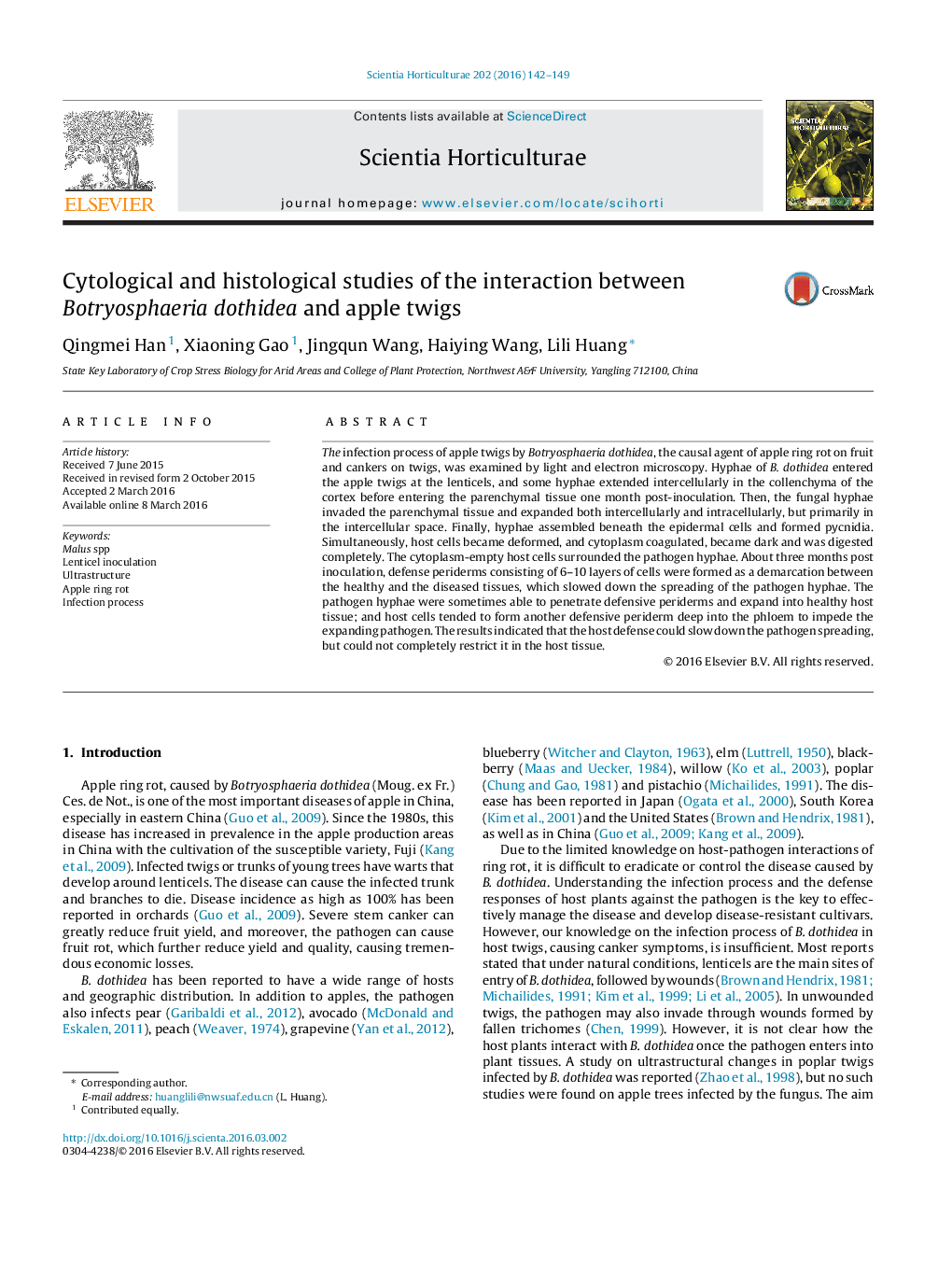| Article ID | Journal | Published Year | Pages | File Type |
|---|---|---|---|---|
| 4566009 | Scientia Horticulturae | 2016 | 8 Pages |
•The infection process of apple twigs by Botryosphaeria dothidea was examined by light and electron microscopy.•The fungal hyphae entered the apple twigs at the lenticels.•Hyphae expanded both inter- and intracellularly, formed pycnidia beneath the epidermal cells.•Defensive periderm surrounded the pathogen hyphae demarcation the healthy and the diseased tissues.
The infection process of apple twigs by Botryosphaeria dothidea, the causal agent of apple ring rot on fruit and cankers on twigs, was examined by light and electron microscopy. Hyphae of B. dothidea entered the apple twigs at the lenticels, and some hyphae extended intercellularly in the collenchyma of the cortex before entering the parenchymal tissue one month post-inoculation. Then, the fungal hyphae invaded the parenchymal tissue and expanded both intercellularly and intracellularly, but primarily in the intercellular space. Finally, hyphae assembled beneath the epidermal cells and formed pycnidia. Simultaneously, host cells became deformed, and cytoplasm coagulated, became dark and was digested completely. The cytoplasm-empty host cells surrounded the pathogen hyphae. About three months post inoculation, defense periderms consisting of 6–10 layers of cells were formed as a demarcation between the healthy and the diseased tissues, which slowed down the spreading of the pathogen hyphae. The pathogen hyphae were sometimes able to penetrate defensive periderms and expand into healthy host tissue; and host cells tended to form another defensive periderm deep into the phloem to impede the expanding pathogen. The results indicated that the host defense could slow down the pathogen spreading, but could not completely restrict it in the host tissue.
Graphical abstractFigure optionsDownload full-size imageDownload as PowerPoint slide
